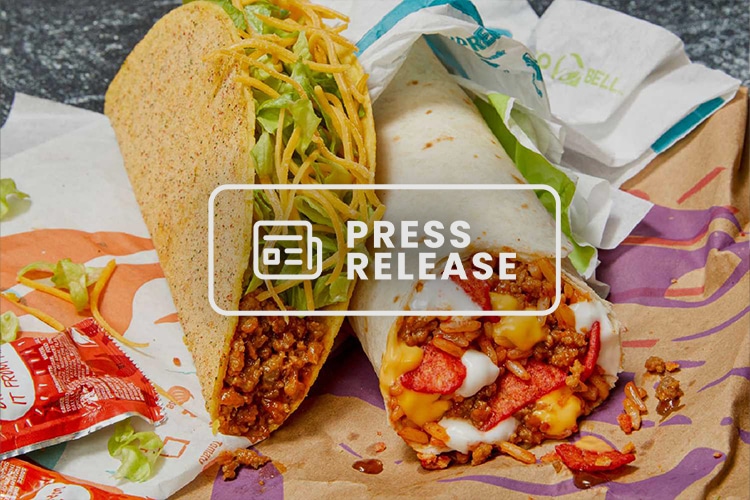Your restaurant food cost is pivotal to your business’ financial success. Everything from inventory management to recipe costing plays a role in controlling your cost of goods sold (CoGS).
While you may have already implemented some techniques, like inventory management, there is an almost infinite level of detail you can dive into to refine your food costs. These techniques are more important than ever and can play an influential role in your restaurants’ success.
Here, we explore some advanced tips for restaurant inventory management. For a more detailed look at some of these advanced techniques, check out our recent webinar, “Beyond Basics: Advanced Techniques to Control Food Costs.”
1. Regularly schedule for inventory checks
Whether you’re starting with the basics of restaurant inventory or looking to more advanced levels, one of the most important things you can do for your restaurant is set up a schedule for regular inventory checks.On the base level, counting your inventory at the same intervals ensures that inventory comparisons make sense. For example, counting every Monday, versus various days of the week, will give you consistent background information at regular intervals. This lays the groundwork for all other advanced techniques for controlling restaurant food costs.
2. Prioritize accurate recipe costing
Lowering your food costs relies on understanding the exact cost of the food you are serving. Recipe costing breaks down the usage and yield of each food item so you can calculate individual ingredients, down to the penny.
When you have more data, you can start understanding the cost percentages of individual ingredients.For example, if you have multiple prep recipes that involve tomatoes that feed into a single menu item, the cost percentage of that ingredient is not going to be the same every individual way it is prepared. Tomato sauce, pico de gallo, and chopped tomatoes may be layered for a menu item, but you need to accommodate the usage and yield on this ingredient to figure out what you’re actually spending.
Once you know this recipe costing breakdown, you can examine sales margins on menu items. You have a target profit margin, but this isn’t an abstract number—it is partly based on your target food cost. So if you know your ideal profit margin, you know what you need to be spending on recipe costing in order to hit that target.
Maximizing recipe efficiency is a moving target that is specific to your restaurant. You may need to examine recipes, your team’s prep efficiency, your vendor list, or menu item price. There are many different areas, but no matter what you’re choosing, you’re optimizing your food item usage.
Automating as much of this recipe costing process as possible saves your team time and ensures better accuracy.
3. Track actual vs. theoretical (AvT) usage
Tracking your inventory regularly tells you how much physical product you went through. But you also want to know how much inventory you are actually using when an employee pushes a button on your point of sale (POS) system.
Integrating your POS with your inventory management software allows you to use the sales data from your POS to calculate the theoretical usage of your inventory, based on the menu items that are ordered by customers. With accurate recipe information (more on that below), you can see how much product you’re using in theory versus how much you actually use.
Comparing these two data points tells you if there is a variance in your restaurant inventory, based on how many times you pushed a button on the system. The actual versus theoretical food costs (AvT) variance here can be critical, depending on how often it’s replicated (an everyday difference will quickly add up).
Examining this comparison point is low-hanging fruit for impacting your food costs. Actually having numbers mapped to inventory use gives you the opportunity to examine the “why” behind your food cost variance (shrinkage, waste, breakage of contract prices, etc). You can also compare AvT across multiple locations, to focus on the locations that need the most help.
4. Train staff on the importance of restaurant inventory control
To trust regular, consistent inventory counts, it is essential to focus on training your staff thoroughly. With proper “best practice” systems, you can rely on accurate results no matter who is taking inventory counts.
First, systems that generate accurate information mean that your management staff has time to focus on other areas, rather than just counting. With restaurant inventory systems in place, management has the bandwidth to spend time on increasing portioning accuracy or monitoring food waste.
In addition, training staff on restaurant inventory actually provides value for your organization as a whole. Activities like using waste logs or tracking yield of food items are opportunities to groom your team on the more metrics-driven side of the restaurant business. Team members engaged in these fundamental food cost techniques are able to see how what they do on the line on a daily basis impacts the CoGS, the health of the business, and their jobs.
5. Leverage smart forecasting tools
Now that you have POS integrations and accurate recipes, what do you do with this information? Forecasting involves looking at the same sales data, but from a different perspective.
Forecasting tools enable you to purchase food, beverage, and supplies at the right level. By tracking historical sales, you are able to use this information to forecast what you will need to buy for the next comparable sales period.
For instance, in regard to prep, following certain rules because of a “that’s how it’s always been done” mentality is a costly strategy. This mentality leads to over-prepping, with wasted product (and dollars) sitting on your shelf based on a fear of running out. Forecasting can help you reduce waste and maximize efficiencies by getting away from the par level inventory idea that you need to always be “prepared for busy.”
When you leverage smart forecasting tools, you’re forecasting for expectations. You’re not running out of product, but you don’t have Monday’s minimum level tied to Saturday’s minimum level. You’re accounting for fluctuation based on daily averages and ordering for an expectation of usage.
In addition, tailoring your food cost can actually influence your labor cost too, especially when it comes to prep. There is a blurred line between CoGS and labor costs. When you have a data-driven idea of how much you need to prep, you can better allocate labor for those prep hours.
Automation with forecasting is key for getting your team more efficient. If you have confidence in the data, managers can review a dashboard to make decisions, instead of getting stuck in the office collecting data on spreadsheets.
6. Track food waste
Food waste can come from many different areas of a restaurant. A fast-paced environment like a kitchen is going to have inevitable accidents, like an employee dropping product. However, there are other areas of food waste that you can address—if you have the data.
You can’t correct what you don’t track. Using multiple strategies for tracking waste, from a clipboard on the line to a comp button on the POS for spills, is an opportunity to identify opportunities for improvement over time. You may never achieve absolute perfection, but you can continue to close your AvT food cost gap.
7. Review vendor contract prices
Your vendors have a huge impact on your restaurant food costs. There are many automated tools that you can leverage in yourrestaurant accounting software for vendor relationships, like automated vendor invoicing or receiving reports that identify error items outside of the contract price. Your restaurant management solution also allows you to automate tracking price changes from suppliers for your recipe costing.
These things make it easier to ensure transparency and accuracy in your relationships. But as you start collecting more data on your food costs, you can also take the time to review longer-term pricing structures.
For example, maybe you see areas in which you use a high volume, and you can discuss a price break. Or, perhaps there is a specific product in which you’ve been getting shorted over time, and you have leverage for contract negotiations on pricing in the future. With more data, you can not only keep vendors more accountable, but you can also make strategic decisions for the long-term.
8. Review selected inventory daily
The better your data, the more “micro” you can get with your adjustments. For instance, you can start to focus on items with a high CoGS, singling out a “hot count” of 5-10 items that are a bit more important from a reporting standpoint than everything else.
Paying special attention to certain items, especially if they are high volume items or an expensive protein, is an easy first step for inventory management that can have a large impact on your food costs. Count these items every day, revisiting numbers on a daily basis to refine.
These kinds of reports, based on restaurant inventory management and accounting data, may need to be tweaked over time. You may need to customize and tailor transactions with vendors to avoid wasting product. It is possible that a certain product can’t be lumped in the same bucket as other items and needs to be ordered on a different delivery cycle.
9. Use menu engineering to improve profit margins
Once you’ve worked on the efficiency and accuracy of your restaurant inventory, addressing the larger variances, it’s time to take a look at the product you’re selling and take advantage of opportunities with menu engineering.
Menu engineering draws from sales mix polling from your POS. It can not only aid you in pricing menu items properly, but it also can increase your bottom line with high-margin menu items.
By analyzing popularity vs profitability, you may find that you have a popular item with a low margin and a less popular item that has an excellent margin. By making small tweaks to the placement of these items in your menu (whether printed or online) you can make significant increases to your bottom line.
You may also make other adjustments to your recipes, revising portions or ingredients, with information from your recipe costing or vendor contract prices. As always, controlling your food costs draws on data points from many different systems, making an all-in-one restaurant operations software platform helpful in ensuring accurate information.
10. Calculate your average daily inventory cost
To help you make more accurate purchasing decisions, consider calculating your average daily inventory cost using the following formula:
Total Inventory Cost in a Specific Period ÷ Number of Days in that Period = Average Daily Inventory Cost
For example, if your total inventory cost for 30 days is $75,000, your average daily inventory cost is $2,500.
This allows you to start thinking about restaurant inventory as more of a fixed cost (at least in your head). From here, you can understand the dollar amount of inventory your restaurant goes through for a set sales amount.
Then, you are equipped to train your team to answer questions before ordering. How much inventory should be on the shelf? How much do we need in between deliveries? These types of questions can help your team refine your food cost over time from the store-level and up.
Conclusion
When you have a grasp on your food costs, you are investing in your restaurant business’ future. There is a ton of information to be gleaned from your inventory cycles and processes, if you have the right tools and commit to examining it. Information about your food costs can inform almost every aspect of your operations.
As mentioned above, if you want to learn more about these advanced techniques, check out Restaurant365’s recent webinar, Beyond Basics: Advanced Techniques to Control Food Costs.
Are you interested in leveraging tools like sales forecasting and recipe costing? Restaurant365 incorporates restaurant accounting software, restaurant operations software, inventory management software, payroll + HR software, and scheduling software into an all-in-one, cloud-based platform that’s fully integrated with your POS system, as well as to your food and beverage vendors, and bank. Ask for a free demo of Restaurant365 today.



